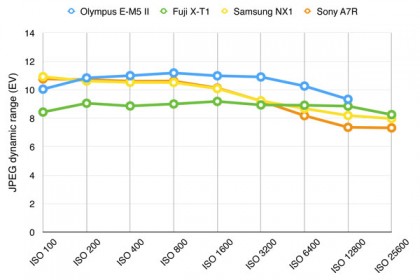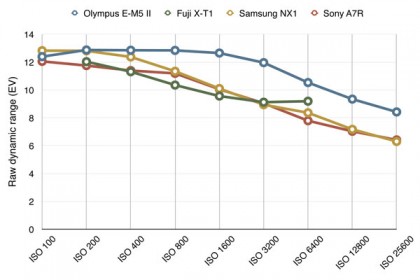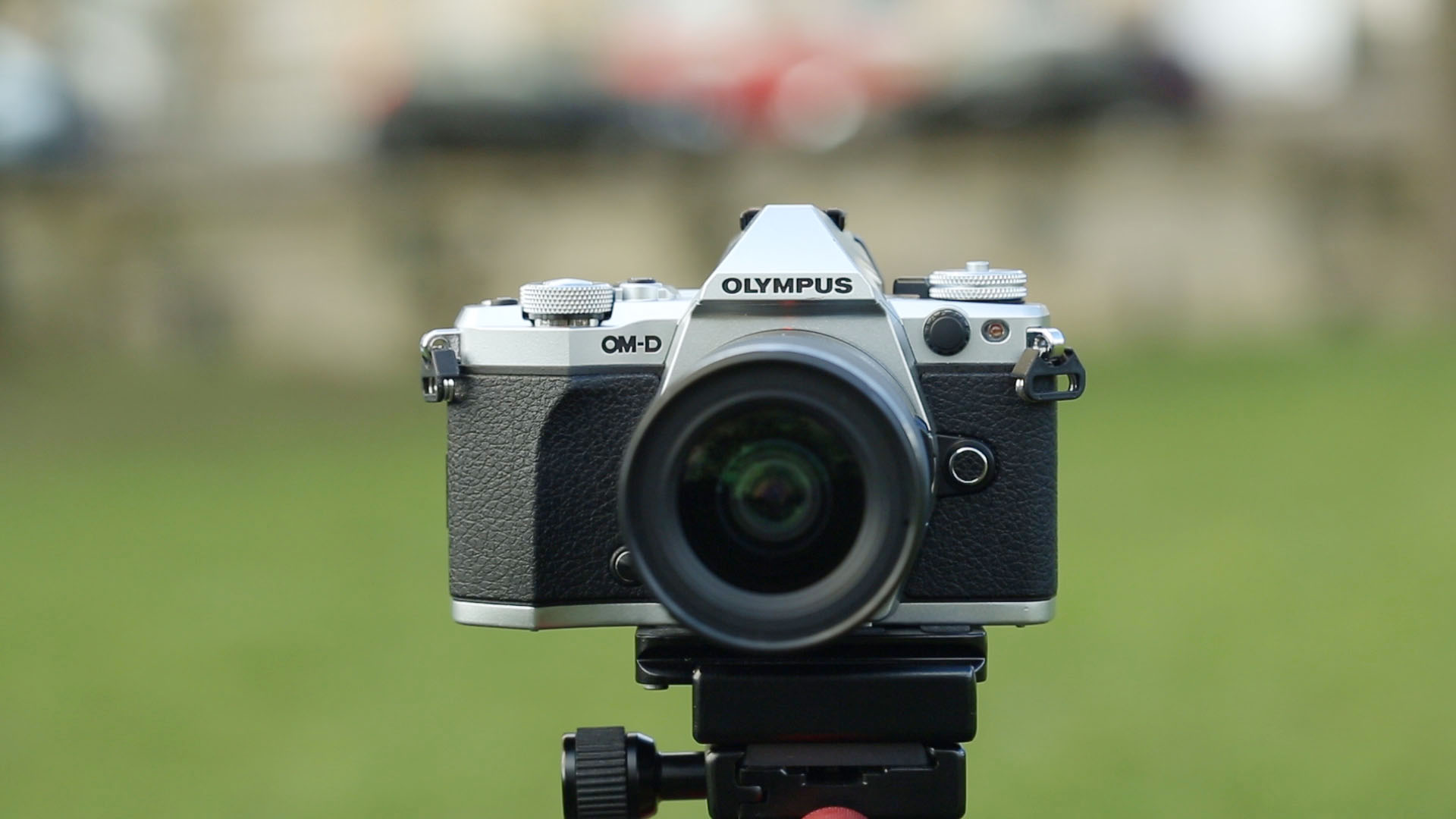Why you can trust TechRadar
Dynamic range is the measure of the camera's ability to record a wide brightness range in a scene without losing ('clipping') details in the shadows or highlights.
We shoot a specially designed chart in carefully controlled conditions and the resulting images are analysed using DXO Analyzer software to generate the data to produce the graphs below.
Our normal procedure when testing new cameras is to process the raw files using the supplied software and convert them into TIFFs before analysing them using DXO's Analytics software. All dynamic range optimisation and noise reduction systems are set to their minimum values.
JPEG dynamic range

Analysis: The E-M5 II compares favourably with the competition indicating that its JPEG files contain a wider range of tones and there's greater detail in image shadow and highlights. However, as we've said before, JPEG dynamic range is connected with global contrast and manufactures tailor this to produce what they consider a more pleasing image. Fuji, for example, tends to favour strong mid-tone contrast which gives images a filmic quality with the impression of lots of detail.
Raw (after conversion to TIFF) dynamic range

Analysis: The E-M5 II is performs well and fairly consistently throughout its sensitivity range. This indicates that raw files have a wide range of tones and can withstand a significant degree of tonal adjustment.
Current page: Lab tests: Dynamic range
Prev Page Lab tests: Olympus E-M5 II vs Nikon D810 Next Page Lab tests: Noise